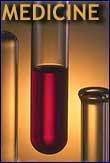How Test Tube Babies Changed the World

Each Monday, this column has turned a page in history to explore the discoveries, events and people that continue to affect the history being made today. This is the last article in the series.
Just over 30 years ago, a baby girl came screaming out of the womb much like any other. It was how she got in there in the first place that was far from average.
As the first "test tube" baby born using in-vitro fertilization methods, England's Louise Brown tested the way we looked at life and science, sparking intense debates that continue to stir controversy.
Though fertilization treatments existed before and have since become quite commonplace, that moment in 1978 marked a profound switch in biological medicine. In-vitro fertilization (IVF), developed by doctors Robert Edwards and Patrick Steptoe, irrevocably changed the way people can and do have babies.
English drank blood, Chinese used acupuncture
It is impossible to prove, but safe to assume, that even prehistoric couples — from our earliest hominid ancestors to the first anatomically modern humans — struggled with infertility.
More recently, ancient infertility is documented in the Bible as well as in Greek and Roman texts, and stories of certain "barren" queens of Europe have endured from Medieval times. Medically speaking, these couples had very few tools at their disposal, relying on anecdotal home remedies in an effort to spark their reproductive systems.
Sign up for the Live Science daily newsletter now
Get the world’s most fascinating discoveries delivered straight to your inbox.
Drinking a concoction of animal blood, milk and urine was the rage in Renaissance England, for example, while the Chinese relied (and still do) on herbs and acupuncture. Because ancient cultures could not explain why couples remained childless, infertility was invariably attributed to a sign from the gods, who were also called upon to help out in the form of rituals and offerings. Things became a bit more high-tech in the 1960s, when FDA-approved fertility drugs arrived on the scene. Designed to stimulate the ovary to produce eggs, the pills and injections began helping thousands of women whose sluggish reproductive systems merely needed a boost.
The drugs could still do nothing for the women whose infertility was caused by blocked fallopian tubes, however, a common problem which prevents eggs from traveling down from the ovaries to the tubes to be fertilized.
That is where Drs. Steptoe and Edwards came in.
IVF a delicate trick
Steptoe and Edwards — two British scientists with complementary expertise in fertility treatments — began working together in 1968. Steptoe was an expert in laparoscopy, a minimally invasive technique used mainly in stomach surgeries until then. Edwards, for his part, had figured out a way to fertilize eggs in a Petri dish, though the eggs he used were cut from women who had to undergo surgery for various reasons. Joining techniques, they worked on the fallopian problem.
It was a match.
The doctors began cultivating embryos outside the womb, a series of events that required removing, fertilizing and implanting an egg with such precise timing and hormones that a woman's delicate reproductive system would be "tricked" into believing that conception had occurred.
Experimenting with trial and error implantation on dozens of women for more than a decade and losing several embryos, the doctors finally delivered a healthy girl, Louise Brown, in 1978. The world watched transfixed as she came into the world free of defects and, it was learned in 2006, able to conceive children of her own.
The United States followed with its first test tube baby in 1980. By 2006, more than 1.5 million children had been conceived through the in-vitro procedure worldwide, according to the World Health Organization.
Babies become big business
By circumventing the fallopian tubes, the business of baby-making has left the bedroom, so to speak. Today, post-menopausal women can conceive if they wish, as can the approximately 3.5 percent of infertile couples who, less than 50 years ago, likely would have remained childless for life.
Those couples who do choose IVF don't have it easy, however. With each cycle costing over $10,000 and several cycles often required to conceive, the average cost of an in-vitro baby, even before it is born, can reach upwards of $30,000 to $40,000.
This repeat "business" that IVF gets after unsuccessful attempts has turned test tube babies into a lucrative industry worth at least $3 billion in the United States alone, experts say.
Most Popular



